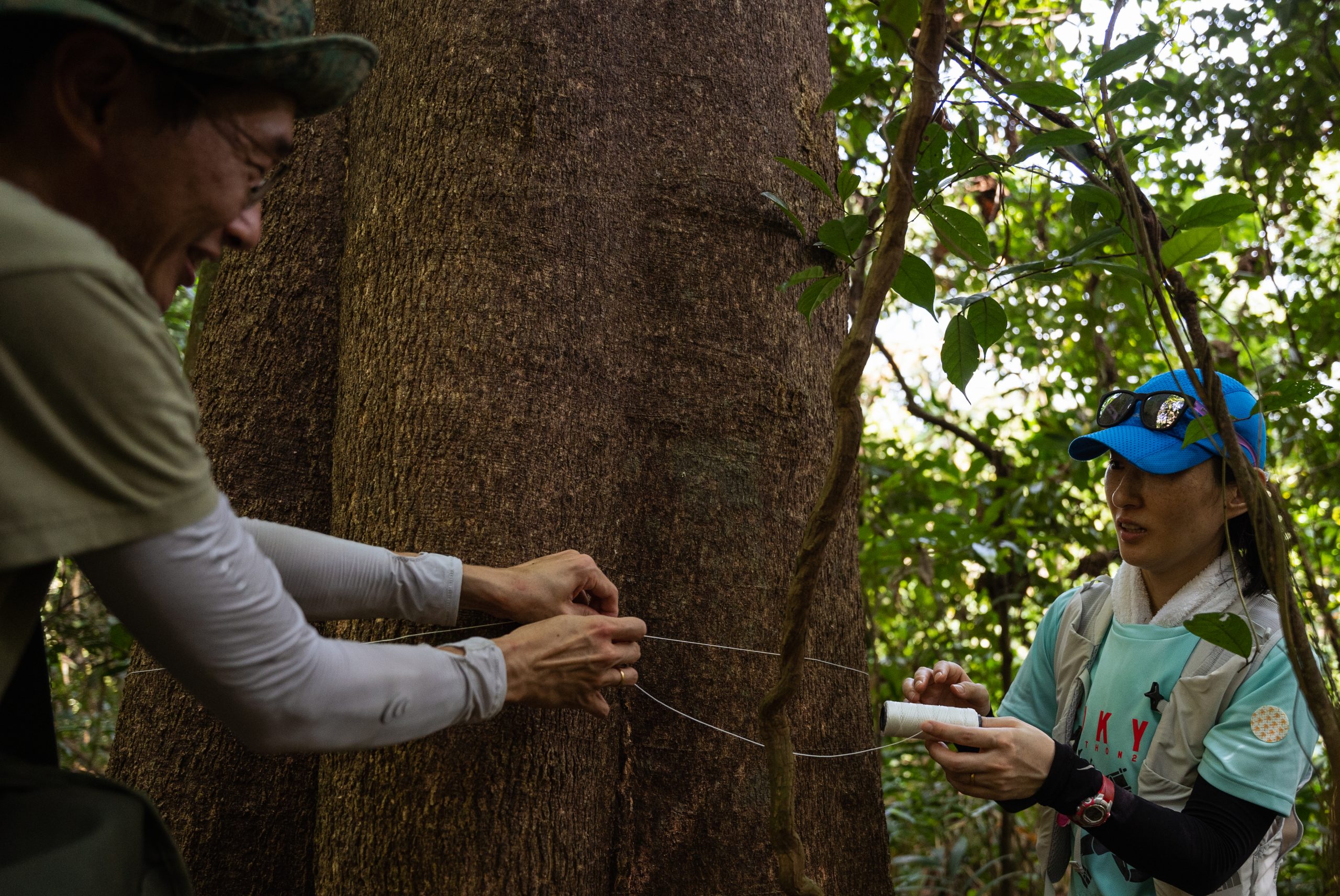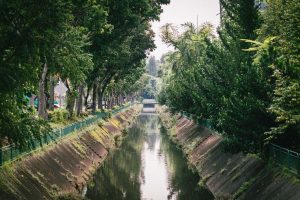All images by Feline Lim unless otherwise stated.
Though he’s wearing a threadbare military tee from his NS days, it’s hard to imagine Chua Chin Tat crawling through the mud with a semi-automatic weapon. He is calm and deliberate when he plods, heron-like, towards Dover Forest. “It’s not pristine, but it has value,” he says off-handedly as we search for an opening in the long grass to barrel into the forest from, via a storm drain on Clementi Road.
In February, Chin Tat conducted his own research and delivered a report to the HDB in favor of conserving Dover Forest. I’ve always thought of activists as a particular kind of person—brash, outlandish characters who are prone to stunts and proclamations. After all, it takes bravado to disrupt the status quo.
Chin Tat debunked my theory. He is lanky and soft-spoken, with a long face and kind eyes. Together with his wife Masako, they are a quiet and ordinary pair, who now spend their weekends getting lost in the maze of foliage at Dover Forest. They chirp in a low tone to each other as they discuss where to take us.
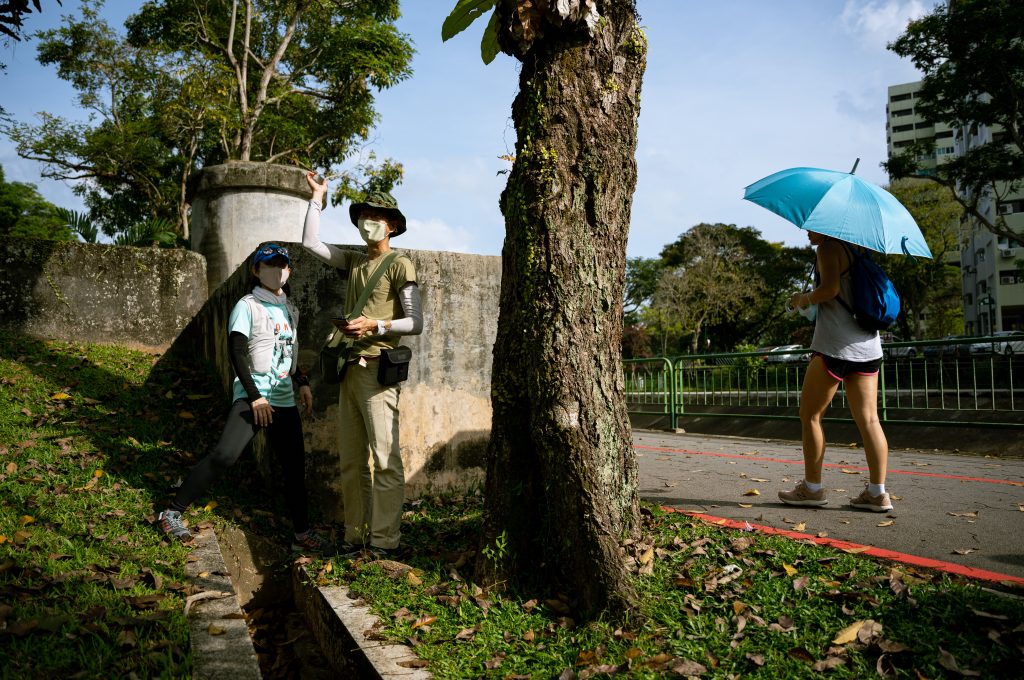
Chin Tat is also something of a cartographer, having undertaken the arduous task of building a map of the forest using coordinates of existing heritage trees and footage from an aerial drone.
“I’m doing this so I can revisit my subjects in case I get anything wrong, or I need more data points,” he says as we step into the forest.
His subjects at the moment are trees. The HDB’s window for feedback on the rezoning of Dover Forest has now closed, but Chin Tat is still measuring the girth of various trunks and examining their droppings on the forest floor to nominate older or endangered species for heritage status. “It’s kind of like kicking the can down the road,” he explains as we wade through the undergrowth. “If my report doesn’t convince them, but they designate some heritage trees then at least something will be saved.”
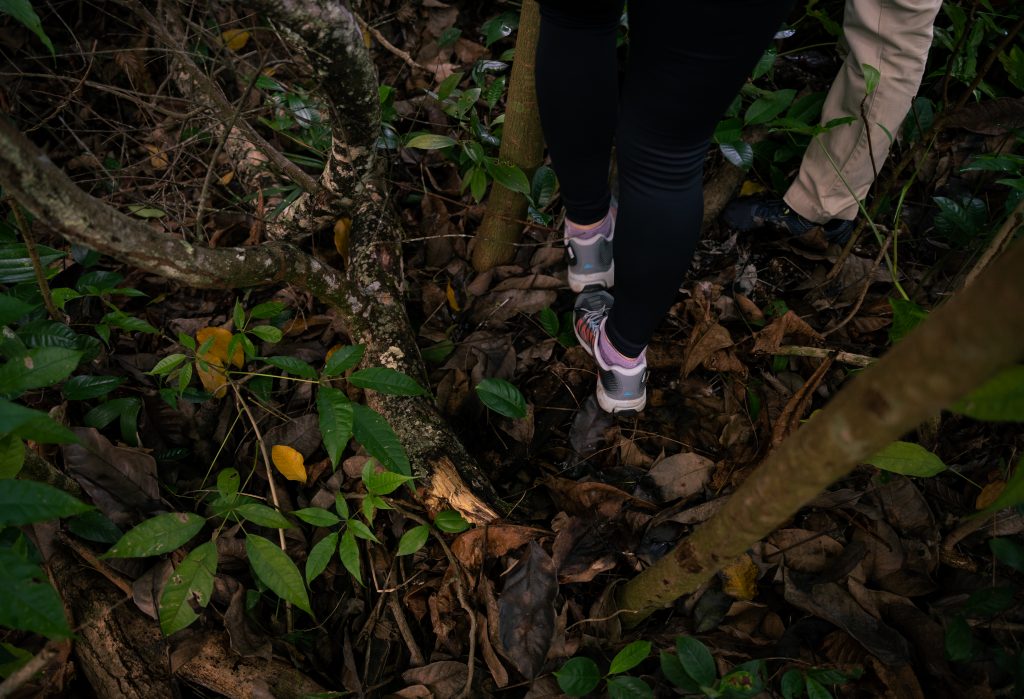
As we walk through a slight clearing and into the undergrowth—which is unruly and damp—the entry point seems to close behind us. As we trek further through the forest, the noise of trickling water from the storm drain and traffic from the road becomes faint.
“It’s peaceful when you go inside, like another world,” Masako remarks while she skirts a low-hanging bough. I take this moment of silence to ask Chin Tat more about his conviction to wander the mucky forest floor in his spare time.

Though he admires the work of Jimmy Tan in Bukit Batok and the feedback written by the NSS on Dover Forest, he believes that there is more work to be done. Chin Tat’s decision to take up Dover Forest is partly emotional, but also pragmatic.
“There are many people talking about Bukit Batok, Clementi, and Kranji,” he says, wiping sweat from his upper lip. “But I haven’t heard much about Dover Forest.”
His emotional connection to Dover Forest stems from his ancestors. Chin Tat’s great-grandfather, Chua Kun Tia, was part of the Anxi Hokkiens who settled the area as a kampong around 1905. The last of the pioneers were moved out of the settlement in the 1980s.
Chin Tat’s research methods are rudimentary, but his knowledge of the forest is vast. As he stretches a piece of worn string around the girth of a Pulai Tree, he says: “There’s only so much one person can do. At first, I was a bit worried that people might think this was strange or weird. But now, I don’t care—I’m taking the time to learn.”

What’s So Urgent About Dover Forest?
In the past year, there’s been a chorus of activists—from the Nature Society of Singapore (NSS) to individuals like Jimmy Tan—aligning to protect wildlife in secondary forests across the island. A viral video of Clementi Forest, shot with an aerial drone, even sparked a petition which garnered over 15,000 signatures in support of the NSS’s proposal to designate Clementi Forest a public nature park.
The HDB’s plan to rezone a handful of unprotected forested areas has proved controversial. The erroneous clearing of vegetation in Kranji, and an agenda to demolish 17 hectares of greenery in Bukit Batok, has garnered significant media attention. But there’s another frontier for climate activists that is gaining traction in Singapore: the plight of Dover Forest.

The secondary forest in Dover has long been on the government’s radar, with its initial rezoning for residential use announced in 2003. The Singaporean approach to land development is a long game—for almost twenty years, the conservation discourse on Dover Forest lulled as the wildlife flourished without disturbance.
But this year, the 2003 rezoning came to fruition with the announcement of the Ulu Pandan BTO flats slated for development and sale in August. The BTO flats are expected to be highly sought after, due to their proximity to Dover MRT and an expansive view of lush woodlands.
In January, the NSS offered their feedback on the matter, suggesting that due to its significant biodiversity—Dover Forest should be made a public-cum-nature park, protecting the wildlife while enabling public access. Following this report, MP for Ulu Pandan, Mr. Chistopher de Souza spoke to parliament in an effort to conserve the forest and use existing, underutilized land for the new BTO’s.
The HDB extended their window to submit feedback to March 1—which is when Chin Tat joined the race to save it. So far, in the discourse on Dover Forest, we’ve primarily heard from politicians and nonprofits. I was surprised to learn that Chin Tat is a lone actor—unaffiliated with formal activist networks or the government. Collective action is prized in Singapore, which naturally, subordinates the value we place on actions taken by the individual.
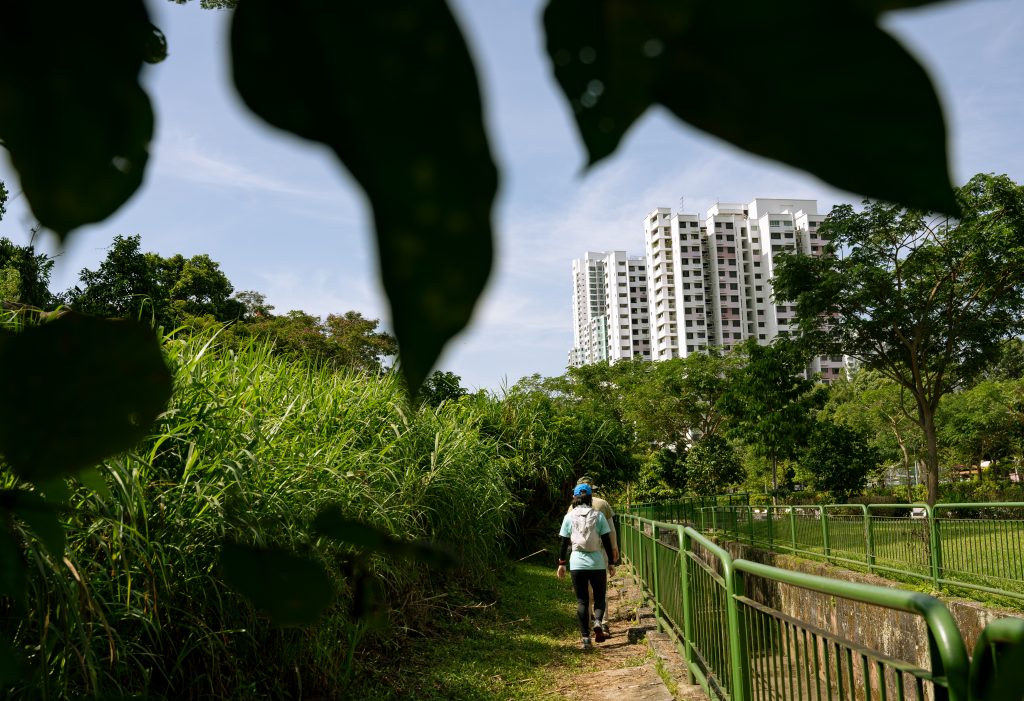
Taking the Time to Learn: An Approach That Individuals and Collectives Should Adopt?
In the wake of the pandemic and our disconnection from the spoils of modern life, Chin Tat and Masako have found something that Singapore has lost. A tow to a force that is more significant than BTOs, culture wars, and financial markets.
Despite the looming threat of deforestation and ecological disaster, they are hopeful on the forest floor, rooted in their conviction that every small action can amount to some change. Their practice of learning the ins and outs of their cause is meditative and unhurried.
I wonder if their activism, which is demure and uncomplicated, could chart a way forward for others who want to change things in Singapore. The flurry of loud voices and accusations in the echo chambers of social media feel urgent, but also desolate and hopeless at the same time.
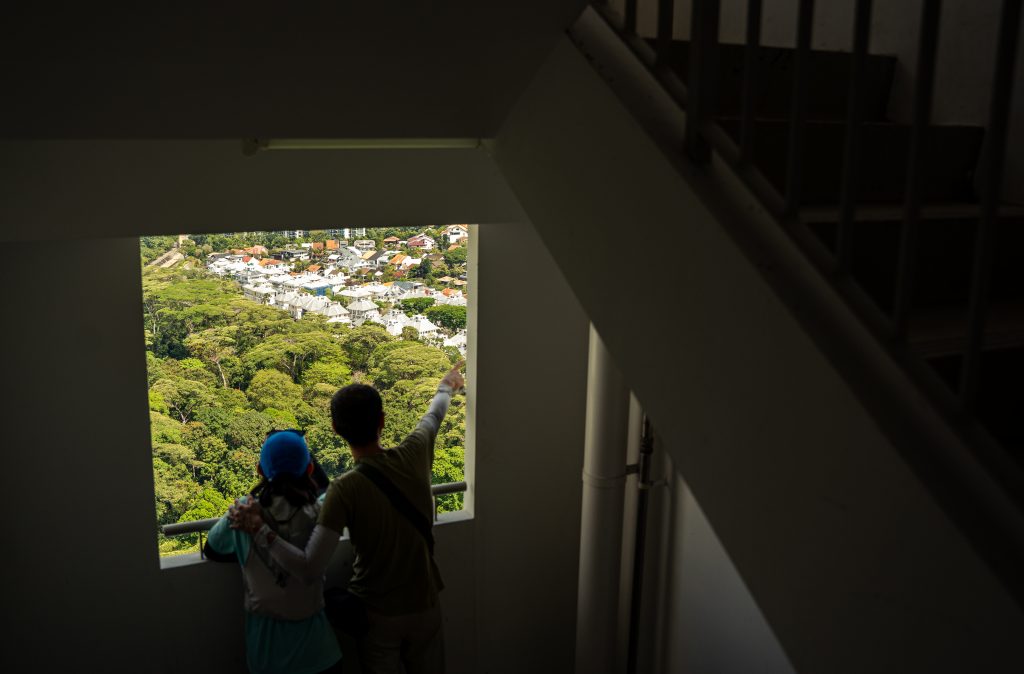
It doesn’t always work, but climate activists in Singapore have demonstrated a feasible way to get your foot in the door. The NSS has a tone of factual accountability; an approachable nature that enables them to prolong conversations and ensure their voices are heard by the powers that be.
There’s no doubt that other local issues which need advocacy may be harder to broach. Being an activist in Singapore is chameleon-esque—one must be informed and firm, yet affable and pragmatic.
Look no further than the Lower Peirce Saga of 1992 to witness the trajectory from small, individual action to collective resistance. It started with one man’s report on migratory birds and resulted in a petition with more than 17,000 handwritten signatures, which thwarted the government’s plan to rezone a secondary forest.
In fact, a movement of this scale to save Dover Forest is on the horizon. An online petition by Dover resident and environmentalist Sydney Cheong has received more than 46,000 signatures. In April, an online panel with an urban planning professional from NTU, representatives from the NSS, and a housing researcher from the ERA will convene to discuss the next steps.
To make further change societally, perhaps we can look to Masako and Chin Tat in Dover Forest for inspiration. If you believe in something, fight for it. But learn it well—and try to feel it first, too.


